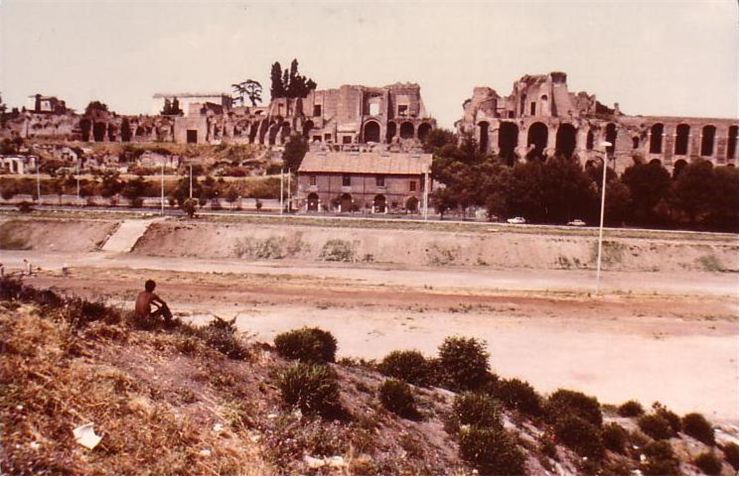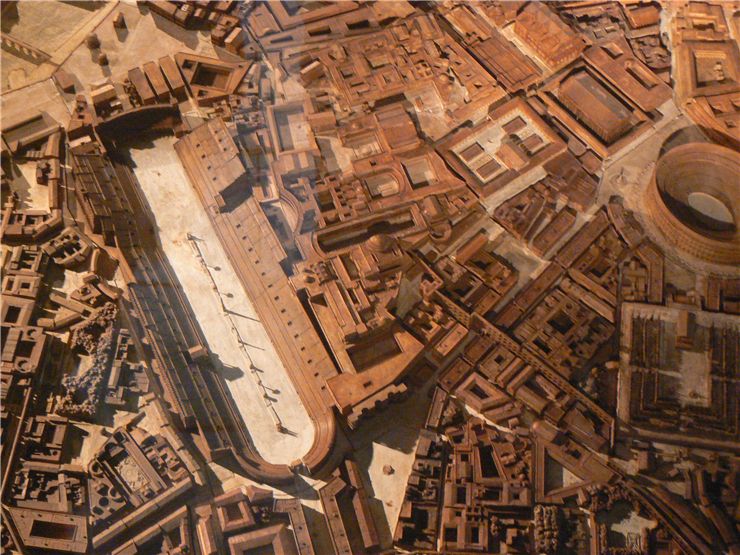Circus Maximus - History of Ancient Rome's Circus
Circus Maximus (Latin for "greatest circus") is a stadium (circus) built in ancient Rome in the Old Kingdom era. It was the first and largest stadium in ancient Rome, and other circuses were modeled after it. It was a place where chariot races were held, as well as other mass entertainment shows. Today, the place where Circus Maximus stood is a public park.
The ancient city of Rome was built on seven hills. Between two of those hills, Aventine and Palatine, was a Valley of Murcia (Vallis Murcia), where horse races were held. Circus Maximus started there as a simple hippodrome. It had turning posts, banks for spectators to sit, and some shrines and sacred spots. The first Etruscan king of Rome built raised, wooden perimeter seating at the Circus for the higher classes of Rome. His grandson, Tarquinius Superbus, further improved the Circus by adding seats for Roman commoners. These seats were made of wood were had to be replaced often.
The circus had turning posts of three conical stone pillars, and an open drainage canal between the posts was a dividing barrier between the lanes. With the Republican era started improving, the Circus Maximus continued. Dictator Manius Valerius Maximus and his descendants were granted seats in 494 BC. Starting stalls were built in 329 BC and could hold up to 25 four-horse chariots. Stone track-side seats were built for senators in the 190s BC.
In 50 BC Julius Caesar continued improving Circus by extending the seating tiers to run the entire track circuit, except at the starting gates and a processional entrance. Now track had approximately 621 m in length and 150 m in width. A canal was also dug between the track and the seats to protect spectators and drain the track from rainwater. Under the seats was a so-called “cavea” - subterranean cells in which animals were held. Front seats were reserved for the aristocracy, while the others were populated by plebs – common people. Seats were still built of wood and could accommodate around 150,000 people, but during the build or shortly after, in 31 BC, they were damaged by fire. Augustus, the first Roman Emperor, had the seats fixed and built an obelisk and pulvinar - an "empty throne" for gods. Improvements were made in many places, but mainly in wood, until Trajan, after many fires and dead, decided to rebuild the Circus entirely in stone.
Games (Ludi) held at Circus Maximus were sponsored by the Roman aristocracy or the Roman state and were held as entertainment for Roman citizens and gods. They lasted from half a day to several days and consisted of chore racing, religious ceremonies, and public feasts. Games also aimed to show competence, generosity, and fitness for the higher office of those who organized them and were a method of politics because of that. When games were not held, charioteers and jockeys practiced on the track, or Circus was used as a corral for the animals traded in the nearby cattle market.

